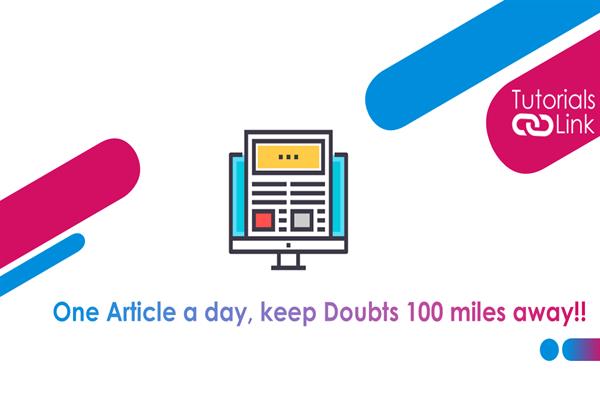5 Ways AI Graders Save Teachers Hours Every Week
Teaching has always been one of the most meaningful yet time-consuming professions. From planning lessons and engaging students to grading endless piles of assignments, educators constantly balance creativity with administrative demands. While teaching itself is a passion, grading often becomes the part of the job that drains energy and time.
That’s where AI graders are changing the game. By automating much of the evaluation process, these tools are giving teachers back hours every week — time they can now spend mentoring students, improving lessons, and innovating in the classroom.
What Is an AI Grader?
An AI grader is a digital tool powered by artificial intelligence (AI) and machine learning (ML) that automatically evaluates student work. Using advanced natural language processing (NLP), these systems can read essays, analyze answers, and even provide detailed feedback — just like a teacher would, but within seconds.
From a high school English class to university-level coursework, AI grader are helping institutions process large volumes of student submissions efficiently. Tools like AI essay checkers, college essay graders, and paper graders can assess writing quality, grammar, structure, and originality with remarkable accuracy.
In essence, AI grading systems are the teacher’s digital assistant — consistent, fast, and always available.
How Do AI Graders Work?
AI graders don’t just “scan” papers — they understand them using deep linguistic analysis. Here’s a simplified breakdown:
- Text Input: The student’s essay or response is uploaded to the platform.
- Language Analysis: The AI grader uses NLP to analyze grammar, structure, and meaning.
- Pattern Recognition: It compares the writing to thousands of pre-graded examples to predict a fair score.
- Feedback Generation: The system provides suggestions, corrections, and performance metrics.
This process allows tools like AI essay checkers and paper checkers to deliver results within seconds — making them indispensable time-savers for educators.
1. Instant Grading and Feedback
One of the most time-intensive aspects of teaching is providing detailed feedback on student work. A single essay can take 10–15 minutes to review carefully — and when you multiply that by dozens (or hundreds) of submissions, grading can easily consume an entire weekend.
AI grading tools solve this problem through automation and speed. A well-trained AI grader essay system can analyze hundreds of essays in minutes, providing feedback that highlights strengths, grammar errors, weak arguments, or unclear transitions.
For example, a college essay grader can quickly identify issues in structure or coherence, allowing teachers to focus only on the essays that need deeper review. This not only reduces grading time but also improves the quality of feedback students receive.
Result: What once took hours can now take minutes — saving teachers entire evenings or weekends.
2. Consistent and Fair Evaluation
Grading can be subjective, even for the most experienced teachers. Fatigue, mood, and unconscious bias can influence how essays are scored. An essay graded on Monday morning might get a higher score than one reviewed on Friday night.
An AI grader eliminates these inconsistencies. Once trained, it applies the same criteria to every essay, every time. It doesn’t get tired or distracted — it simply evaluates based on logic and data.
This ensures that students are graded purely on their performance, not on human factors. Tools like essay graders, paper graders, and AI essay checkers apply uniform standards, creating a fairer grading environment for everyone.
Teachers benefit because they can rely on AI to handle the routine assessments while they focus their attention on outliers, special projects, and personalized guidance.
3. Simplified Data Tracking and Analytics
Beyond grading, teachers also spend time recording results, tracking progress, and identifying trends in student performance. Doing this manually is tedious and prone to error.
AI graders streamline this process with built-in data analytics and performance tracking. Every time a student submits an assignment, the system logs key metrics — writing quality, grammar accuracy, improvement rate, and even plagiarism risk.
With these insights, teachers can identify struggling students early and personalize support. For example:
- A paper checker might reveal that many students struggle with citation formatting.
- A college essay grader might flag common logical errors or weak thesis statements.
This saves hours of manual analysis, giving teachers a quick snapshot of class performance and actionable insights for lesson planning.
4. Streamlining Administrative Work
Grading isn’t the only time-consuming part of teaching — administrative work can be equally demanding. From organizing submissions to entering grades into online systems, teachers often spend several hours each week on repetitive digital tasks.
AI grading tools integrate seamlessly with Learning Management Systems (LMS) and digital classrooms, automating most of these processes.
For example:
- A paper grader can automatically assign scores and sync them with the class gradebook.
- An essay grader can generate downloadable reports for students.
- A paper checker can flag plagiarism and notify the teacher instantly.
By handling the “busy work” of grading logistics, AI graders give teachers more time for what truly matters — teaching and connecting with students.
5. Encouraging Self-Learning and Student Independence
Teachers often spend time providing one-on-one feedback to students who need extra help. While this is valuable, it can be difficult to scale. AI essay checkers and AI graders can act as 24/7 writing assistants, allowing students to self-assess and improve their work before submission.
For instance, a student might use a paper checker to review grammar and citations, or an AI grader essay tool to get instant feedback on argument strength and structure.
By empowering students to learn independently, teachers can focus their time on guiding deeper learning and critical thinking rather than correcting surface-level writing errors.
Result: Less time spent re-explaining basic concepts — and more time nurturing higher-level skills.
The Role of AI Graders in Modern Education
The impact of AI graders extends beyond time savings. They represent a broader transformation in education — where technology supports teachers, rather than replacing them.
AI grading tools are not meant to replace human judgment. Instead, they complement educators by automating routine assessments while preserving the teacher’s role as a mentor and guide.
As schools adopt tools like college essay graders, AI essay checkers, and paper graders, educators can spend less time on manual correction and more on personalized feedback, creativity, and innovation in their teaching methods.
Real-World Examples of AI Grading in Action
Many schools and universities have already integrated AI graders into their systems:
- High schools use essay graders to evaluate language arts assignments, giving students immediate feedback on writing quality.
- Universities rely on college essay graders to handle large-scale essay evaluations, ensuring fairness across departments.
- Online education platforms incorporate AI essay checkers and paper graders to give learners instant improvement tips.
These examples prove that AI isn’t replacing teachers — it’s empowering them to teach smarter, faster, and with more impact.
The Future of AI Grading and Teacher Support
As AI continues to evolve, grading systems will become even more advanced and personalized. The next generation of AI graders will be capable of:
- Understanding creative writing and tone with greater nuance.
- Providing individualized improvement plans for each student.
- Integrating voice and visual assessments for multimedia projects.
- Offering real-time feedback during live digital writing sessions.
Soon, AI grader essay tools will act as co-pilots for teachers — not only grading papers but helping design better assignments and identify learning gaps before they become problems.
Conclusion
Teaching is both an art and a science — and AI graders are helping teachers balance the two more effectively than ever.
From essay graders to paper checkers, these tools save educators countless hours each week by automating grading, tracking performance, and delivering instant feedback. Teachers can now invest their time where it truly matters: mentoring, inspiring, and guiding the next generation of learners.
The future of education is not about choosing between humans and technology. It’s about collaboration — where AI graders handle the repetitive tasks and teachers focus on creativity, empathy, and growth.
In short, AI grading tools don’t just save time — they give teachers the freedom to do what they do best: teach.





